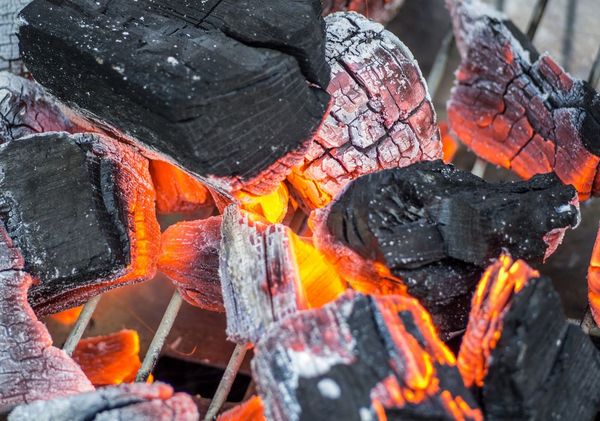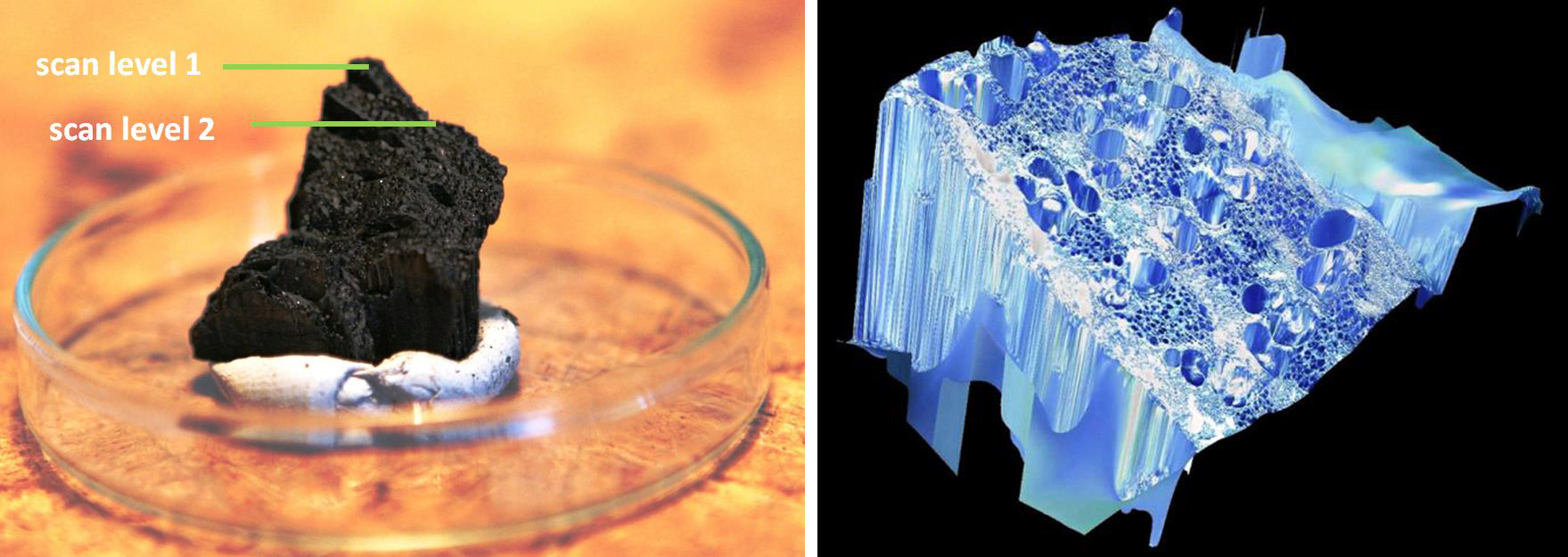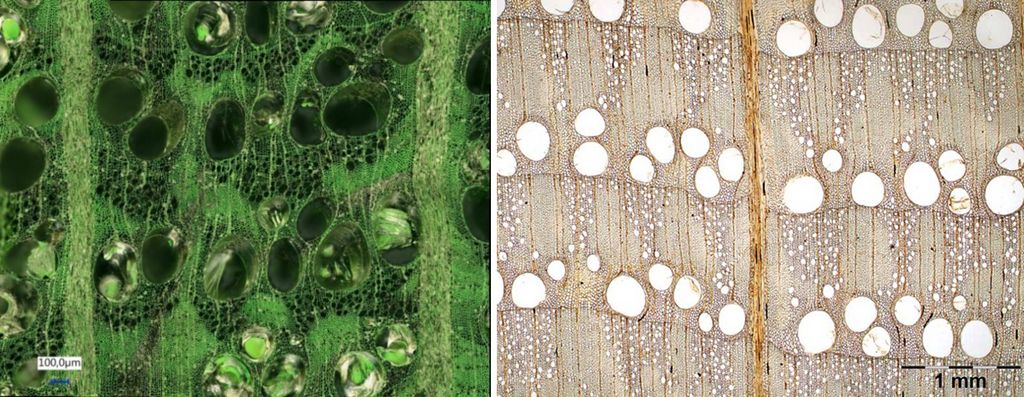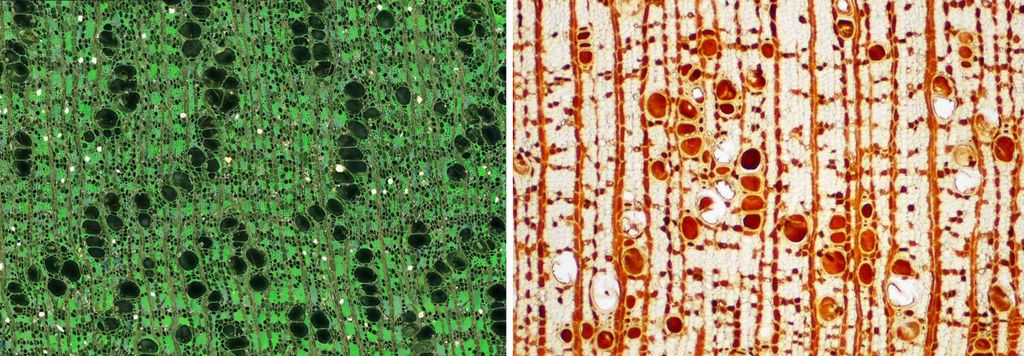Expertise
Charcoal: What are we barbecuing with?
Volker Haag, Gerald Koch | 2021
Scientists at the Thünen Centre of Competence on the Origin of Timber have examined the composition and declarations of around 450 charcoal and briquette assortments in recent years. With surprising results.
Barbecuing with charcoal is the trend. According to figures from the Federal Statistical Office, consumption in Germany is more than 250,000 tons per year. However, most of the wood used does not come from "domestic forests". Around 85% of the charcoal sold in Germany is imported from abroad, often from tropical and subtropical regions, but also from Eastern European forests.
New microscopy method
Consumer and environmental protection organizations, as well as traders and importers, have asked the Thünen Competence Center several times since 2016 to examine commercial charcoal batches, such as those available in supermarkets, gas stations or DIY stores.
For the determination of the selected charcoal/briquette samples, a special 3D reflected-light microscopy technique is used to visualize the characteristic anatomical structural features. Compared to the microscopic determination of solid woods, flat (planar) sectional specimens cannot be produced from charcoal because the tissue is strongly decomposed by the charring process and is very brittle. Using the new digital microscopy technique, the uneven areas are digitally scanned and assembled within a programmable field. This initially produces a three-dimensional image, which is converted into a two-dimensional representation (Fig. 1).
The quality and sharpness of the images correspond to the results obtained "classically", i.e. in the preparation of microscopic thin sections. The high-resolution imaging makes it possible to detect the smallest cell structures and compare them with the structural features of more than 400 commercial tree species in the database of the Thünen Institute (Figs. 2 and 3). With the help of an integrated polarization technique, which makes the images appear optically green, the contrasts of the structural features can be further enhanced and native woods can be distinguished from tropical and subtropical species.
High proportion of "critical" product ranges
An investigation of 20 charcoal assortments, commissioned by WWF in 2017, showed:
- approx. 50% of the investigated assortments which were traded in Germany did not contain any information on the woods or tree species used,
- only 30% of the traded charcoal and briquettes came from certified sources (FSC or PEFC),
- about 40% of the assortments traded in Germany contained mainly woods from subtropical or tropical regions. Three quarters of these consisted exclusively of tropical/subtropical woods, and one quarter were admixtures of woods from temperate latitudes.
Further extensive test assignments followed. The examinations of around 450 assortments and approx. 6,750 microscopically analyzed individual samples have provided fundamental insights into the woods used as well as deviations from stated declarations.
In detail, it could be determined in 2019 that about 20% of the examined assortments must be evaluated as "critical" with regard to the stated declarations of the woods/tree species. These were essentially three case types:
- Assortments that advertise the use of only certain wood species ("beech wood") and in which admixtures of other "native woods" were detected.
- Assortments that do not contain any information about the woods used: These batches mostly consist entirely of tropical/subtropical woods.
- Assortments with the declaration "from native hardwoods": Here, in addition to native woods such as beech, maple or oak, admixtures of tropical/subtropical woods could also be detected. In two cases, the batches were even FSC or PEFC certified.
In 2020, the Thünen Institute, in cooperation with WWF, conducted further investigations in a Europe-wide approach. For this, 150 charcoal batches from 11 European countries were analyzed. The results are summarized in the WWF brochure "Grillkohle 2020 – Eine EU-Marktanalyse" (in German).
Charcoal from tropical wood not in any case illegal
When evaluating these results, it must be borne in mind that the use of wood from subtropical or tropical regions for the production of charcoal cannot or should not be categorised as "illegal" or "overexploitation". In Namibia, for example, woods of the genus Acacia are processed into charcoal from land maintenance measures against bushes. In many tropical regions, thinnings or residual wood from the sawmill industry are used. However, in various countries, such as Paraguay or Nigeria, the local control possibilities are very limited.
In contrast to many other wood products, charcoal is not yet subject to the EU Timber Regulation (EUTR).
It must be clearly pointed out that an exact proof of origin with genetic methods or on the basis of the isotope technology, as it is used e.g. for sawn timber, is not possible with charcoal. Therefore, the proof of a legal use/processing of wood into charcoal can only be provided by microscopic examination of the assortments as well as careful labelling and complete certification. This is demanded by NGOs and already practiced by some manufacturers.





![[Translate to English:] Logo des Bundesministerium für Ernährung und Landwirtschaft](/media/allgemein/logos/BMEL_Logo.svg)